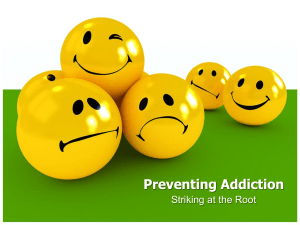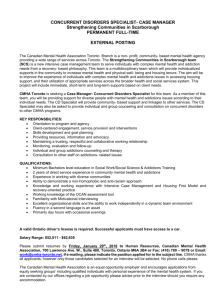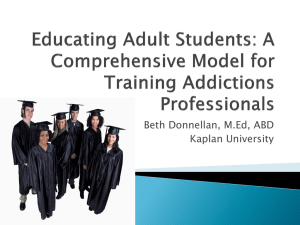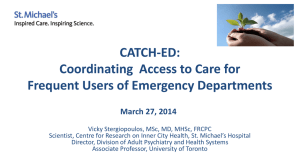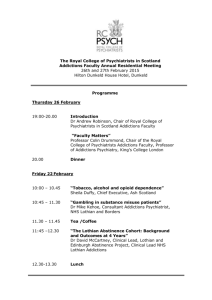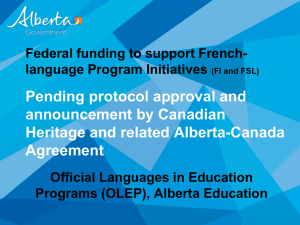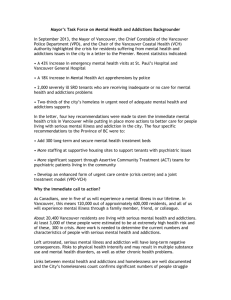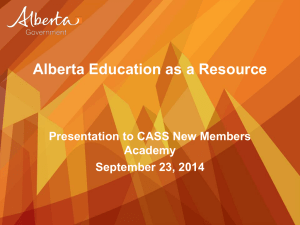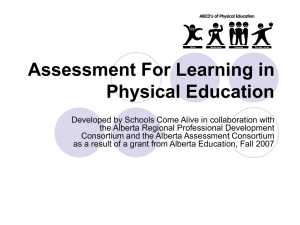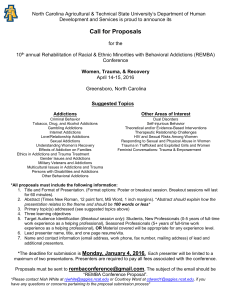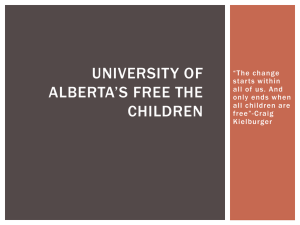See the PowerPoint Presentation
advertisement
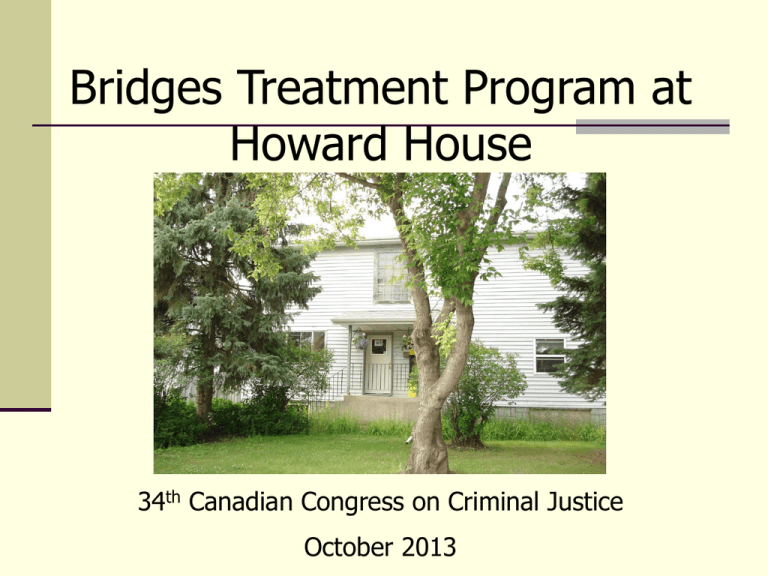
Bridges Treatment Program at Howard House 34th Canadian Congress on Criminal Justice October 2013 About Bridges Opened in 2004 in a pre-existing open custody facility Residential treatment facility 8 beds treatment, 4 beds respite / emergency care Adolescent males sentenced under the YCJA Reduce re-offending & integrate youth into communities across Alberta 90 day minimum program commitment, length of stay based on clinical indicators and legal status 10 week continuous intake curriculum Essential link between custody and full community outpatient treatment Target Population Young male offenders serving open custody or community based sentences Mental health and / or addictions issues Ages 14 to 19 years (can be older with IRCS) Typical resident High severity convictions History of non-compliance with community sentences Early onset of substance abuse Issues with emotion management Eligibility Requirements Demonstrate need for treatment Demonstrate readiness for treatment Contemplative or higher on Stages of Change Model Issues with substance abuse and / or mental health Period of detoxification from substances required Meet community safety criteria Consideration of offence background Stable and compliant while at EYOC / CYOC Complete interview Consent to program expectations Referral and Admission Process Primarily from young offender centers, probation and court recommendations Interview youth upon receiving completed referral forms and collateral reports Ensure understanding of treatment expectations and commitments Treatment team consults to determine admission Referrals can be made to: Bridges Treatment Program Phone (780) 420 – 1497 Fax (780) 426 – 0403 Partnership for Service Delivery Alberta Justice and Solicitor General Alberta Education, Edmonton Public Schools Teacher, Education Assistant Alberta Health Services – Addiction and Mental Health Addictions Counselor, Mental Health Counselor, Psychiatrist Edmonton John Howard Society Group Home Director, Program Coordinator, Recreation / Leisure Programmer, Case Workers, Youth Workers Treatment Goals To increase protective factors and promote resiliency To decrease risk factors related to addictions, mental health, and criminal behavior To promote quality of life and healthy level of functioning in major life areas To facilitate transition into the community To provide alternative choices and healthy activities Therapeutic Milieu Staff must Provide high “unconditional positive regard” and discipline Role model and teach pro-social skills Ensure physical and psychological safety Create environment for growth NOT YELL!! Youth must Be held accountable for behavior Be treated with respect and empathy Be provided opportunities and encouraged to succeed Feel empowered Approach to Facilitating Change Goal Setting Goals established in collaboration between youth and treatment team Holistic Therapy is 24 hours per day with learning in groups practiced in daily living Reduction in Risk Factors e.g. Substance use, antisocial behaviors, exposure to violence Increase in Protective Factors e.g. Success in school, healthy leisure interests, community supports and transition Collaboration with collateral sources e.g. Parents, custodial institutions, Young Offender Branch / Probation, Alberta Children and Youth Services, police Therapeutic Programming Group & individual counseling Addictions specific treatment Criminal offense specific treatment Mental health specific treatment Education/ vocational training Life skills training Social skills training Recreational and leisure programming Relapse prevention planning Transition planning Therapeutic Curriculum Group curriculum designed for 10 week cycle with continuous intake Awareness development Drug education, high risk situations, coping mechanisms, crime cycles Skill development Emotion management, assertiveness, setting boundaries, problem solving, healthy communication, healthy relationships, refusal skills, conflict resolution, leisure and recreation, etc Transition to aftercare services Addictions and mental health services in home communities, respite care Cognitive Behavioral Therapy (CBT) Evidence based model for successful offender rehabilitation Compatible with other treatment modalities Behavioral Modification, Motivational Interviewing, Risk Need Responsivity Interaction of thoughts and feelings and how this affects behavior: Our perceptions are constructs of our thoughts and feelings External events do not cause behavior – our thoughts and feelings do. CHOICE! Gradual shift from external to internal controls PRACTICE, PRACTICE, PRACTICE with homework assignments and in groups Economics Estimated annual cost of detaining a youth in a custodial institution $100,000 Average annual cost of a youth attending The Bridges Treatment Program at Howard House $25,000 All programming in line with current best practices Anecdotal findings from youth, professionals, and parents show success Demographic and assessment data collected over past 9 years shows improvements via pre-post tests Working to secure finances to hire an independent body for research at the 10 year mark Challenges & Successes Community safety Working with increasingly violent offences Collaboration with police and custodial institutions, understanding everyone`s role and that we`re all on the same side Zero staff assaults and minimal physical aggression amongst youth since 2004, service provision to 3 IRCS cases Special needs offenders (FASD diagnosis, ESL needs, immigrant experiences) Utilization of existing community agency resources and consulting professionals with specializations Challenges & Successes Managing temptations for substances in a community setting Length of time in treatment Healthy milieu encourages resident transparency and responsibility Addressing complex issues of addictions and mental health in a holistic manner, youth do voluntarily stay past legal mandates, utilizing resources pre and post Bridges Budgetary cuts across ministries Staying ahead of curve, ongoing review of core curriculum, adaptive programming components based on fiscal realities Discussion Suggestions, Comments, Q & A, Networking
